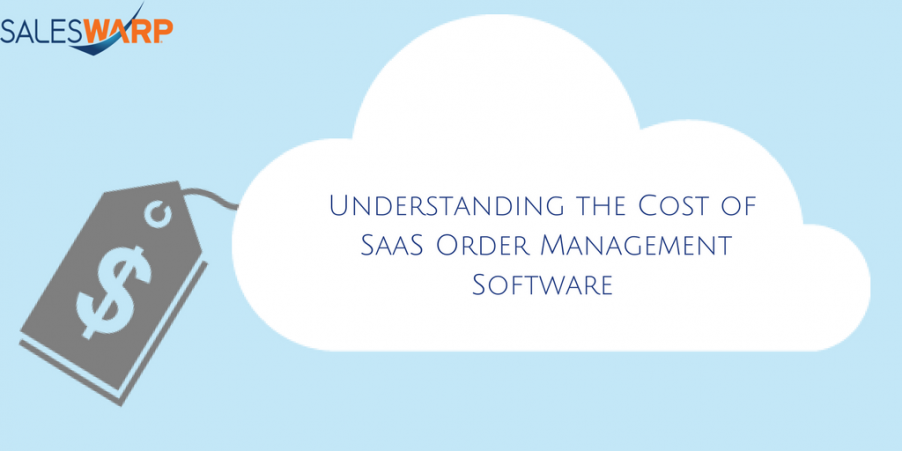Understanding the Cost of SaaS and Cloud Software Solutions in Order Management Software
Increasingly, retailers are purchasing Order Management Software (OMS) on a Software-as-a-Service (“SaaS”) basis. Rather than purchasing software to install, or additional hardware to support it, customers subscribe to a SaaS offering. This eliminates the expense of hardware acquisition and maintenance, as well as software licensing, installation, and support. Retailers buying a SaaS solution also benefit from regular software upgrades that are included in the solution cost (i.e., not an extra fee).
Over the years, numerous articles and whitepapers have detailed the maintenance and cost benefits of the subscription software model versus the traditional perpetual license model. So, in this article, we focus on reviewing the cost components of the more common and widely accepted SaaS model.
The purpose of this article is to provide a retailer (or any business) with a foundation from which he/she can have an informed discussion with a software vendor about the direct and indirect expenses of deploying and maintaining a SaaS solution.
Software Subscription
Subscription terms range from monthly to annual payments. Generally, vendors are open to discounting the total annual cost if the customer makes upfront payments. However, vendors may also push for annual payments when the client wants or requires a material number of configuration or customization changes to the software. The rationale for annual upfront payments in this scenario is that there will be some cost sharing between the client and the software vendor for these requested changes. Ultimately, the solution provider needs to recoup that investment in the client through a longer guaranteed subscription period and upfront payments.
Hardware
Because SaaS vendors host the software, you will not need to buy any server hardware. In all likelihood, if your current laptops and PC’s have decent access to the internet, you won’t need to buy any new hardware to run the solution. Even more importantly, you won’t have to hire additional staff to maintain the hardware, ultimately saving you a lot of money, in comparison to non-SaaS solutions.
Software Set Up
While there is no software to be installed with a SaaS system, many vendors of mid- to high-end systems will charge an implementation fee. These services are for the vendor to set up and configure the solution to meet the customer’s specific requirements. The good thing is that these costs are not recurring because upgrades (even major ones) are all done behind the scenes by the software vendor as part of its regular maintenance and improvement of the software. Generally, they are automatic and rolled out to all customers after major testing by the vendor. Additionally, with the right scoping of the project between the customer and the vendor, you should have a good idea in advance of what the implementation will cost.
Customizations
Traditionally, many SaaS vendors have not offered significant customizations because these changes were hard to separate from the core software offering. However, these days most vendors should be able to provide significant customizations to meet the unique rules and requirements of any customer (assuming the SaaS solution is built on a modern software architecture). In a retail environment, the most common customization requests relate to shipping processes, dropshipper processes, special communication methods with vendors (about trading product, inventory, and order information), unique order routing considerations for a customer service team, and custom reports for various functional groups.
Most retailers have some unique processes that they will want replicated in the OMS. So, when you evaluate software vendors, make sure the vendor has the modern SaaS architecture needed to meet your business goals, and that it can be done in a cost-efficient way.
Data
When deploying a new system, it’s often necessary to migrate your data from your existing systems, all of which can have different levels of detail. For retailers, this is even more complex because their data likely resides in several different systems (e.g. POS, ERP, WMS, shopping cart, online marketplaces, etc.). Even worse, while the data is often similar, it can vary slightly (maybe the SKU number and its details are unique based on the system in which it resides). To be successful with an OMS implementation, you need to factor in not just the cost of migrating data but also the time it could take. Migrating may require converting data from one format to another, consolidating it with other sources (marketplaces, dropshippers, vendors, etc.), and “scrubbing” it for duplicates, outdated information, or just plain bad entries. This can take up to several weeks based on the volume of data that needs to be migrated. Luckily, this is a one time, upfront investment and will help immensely in managing your business in the long-term.
Training
Training users is critical to achieving the goals of your new OMS solution. Most SaaS providers will accomplish the training via specific customer/vendor online meetings, good documentation, and numerous conference calls. Vendors of mid- to high-end systems may do some on-site meetings in the initial phases of the implementation and training. But for most SaaS systems, you should expect to use online training or in-line help functions. The key is to make sure the appropriate end-users and stakeholders understand the use of the system and its ins-and-outs. Without proper training and understanding, the full benefits of an OMS will be much harder to realize. The cost of training could vary significantly from: (i) free to (ii) free for the first X hours to (iii) pay as you go.
Conclusion
In conclusion, the costs of rolling out an innovative SaaS solution like SalesWarp’s order management solution are dependent on the type and size of your business, the customizations required to meet your business goals, necessary training to properly utilize the software, and the condition of your current data. However, the most important element regarding OMS implementation costs is to ensure there is a full understanding of your business goals and how much it will cost for the vendor to help you achieve those goals.

